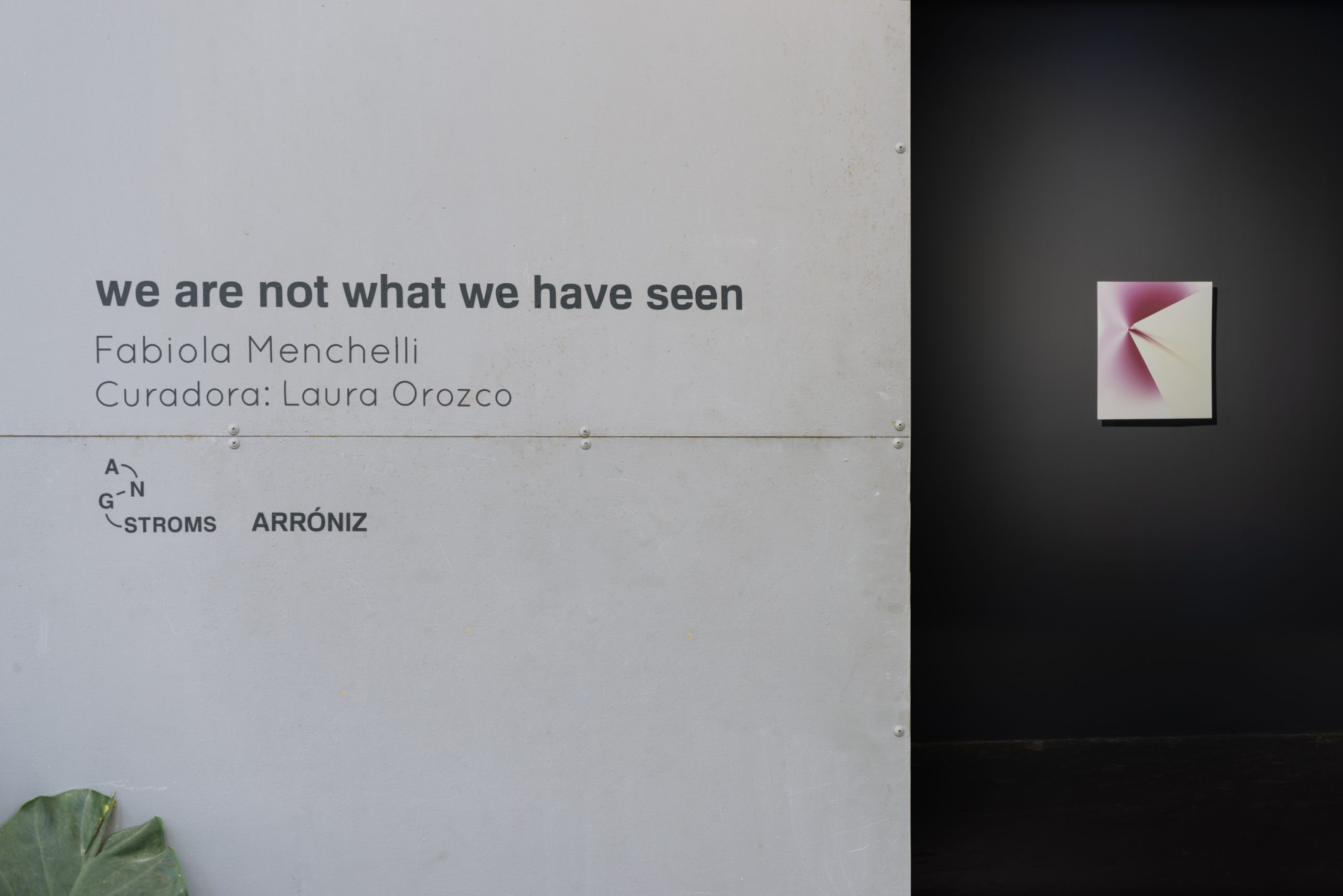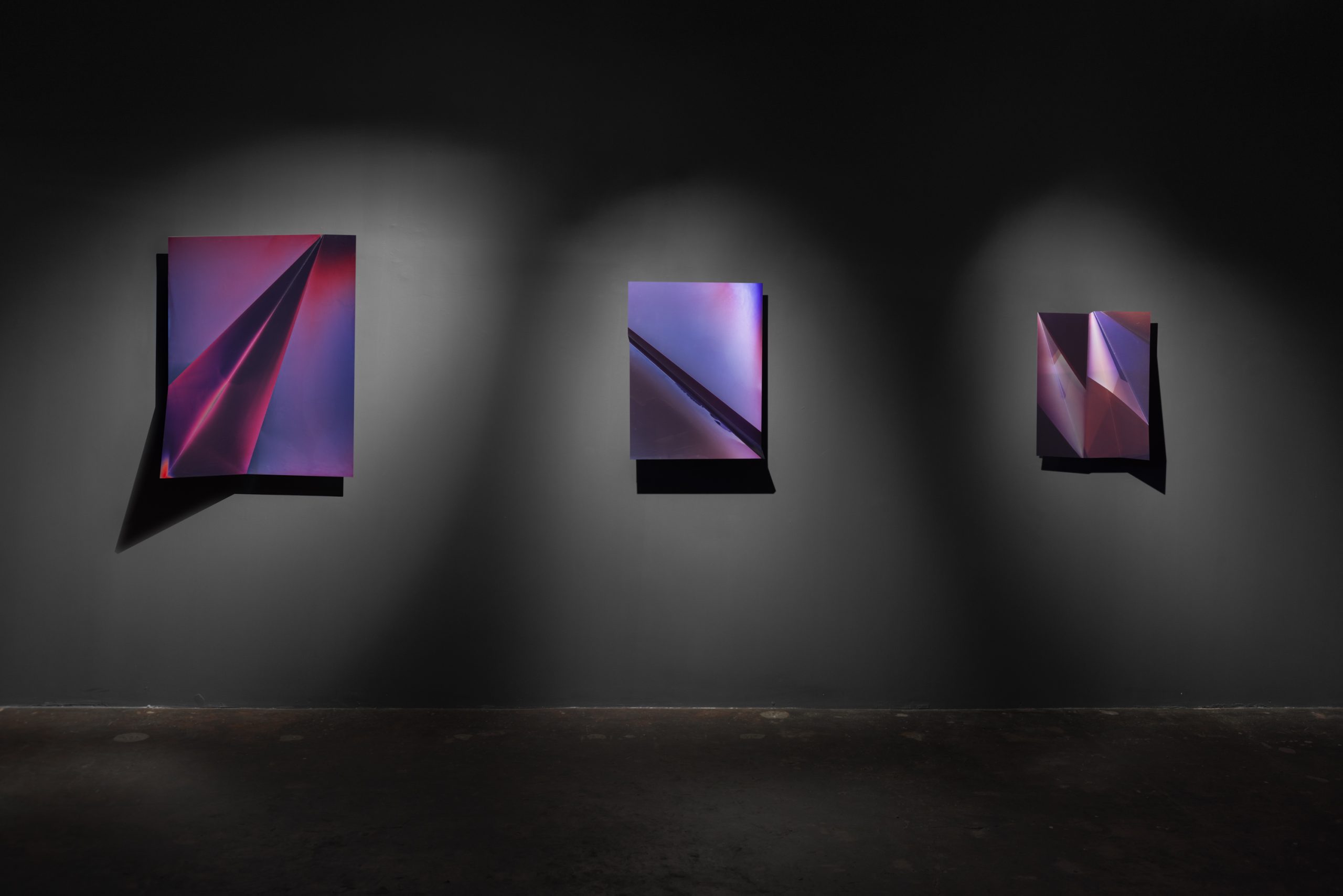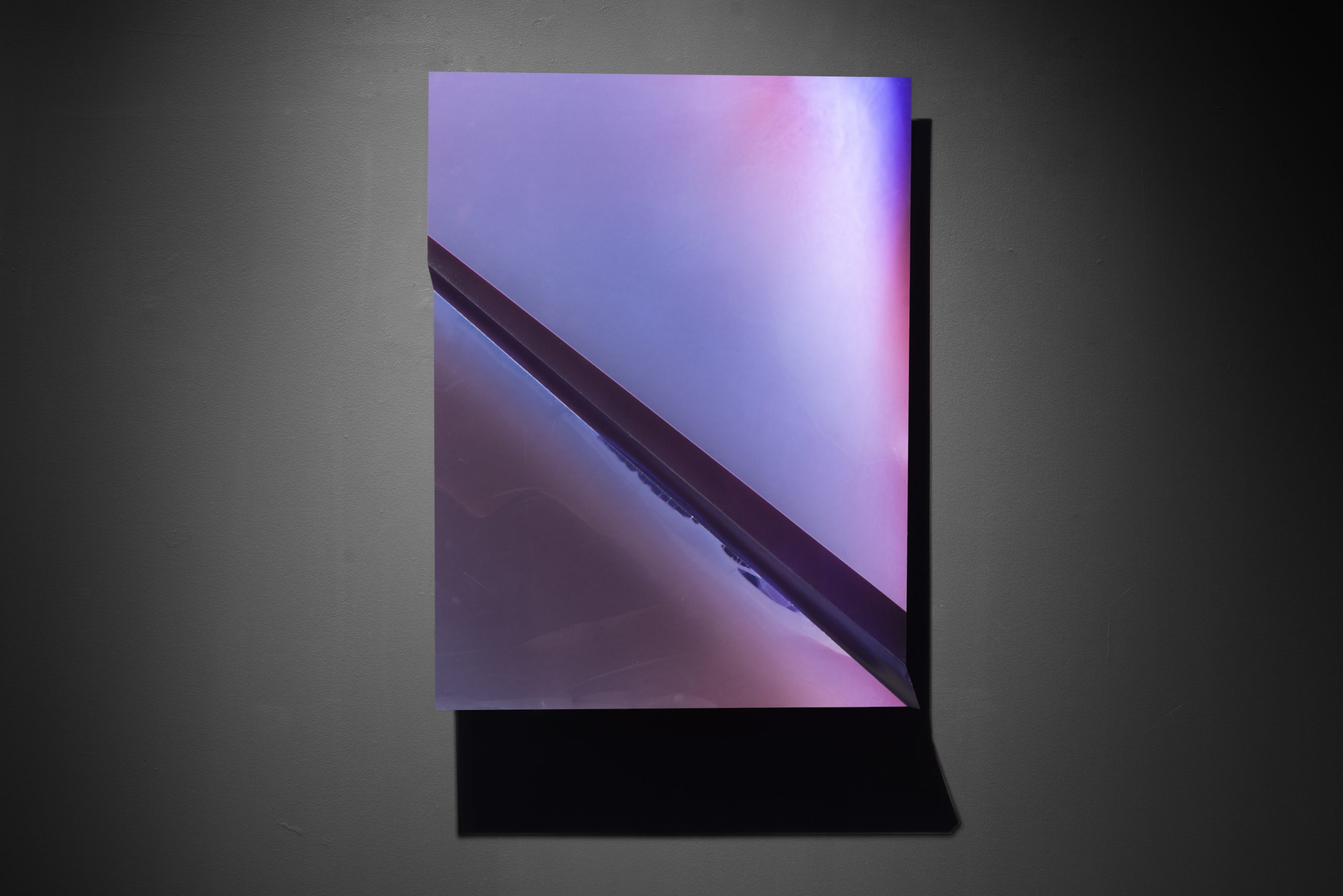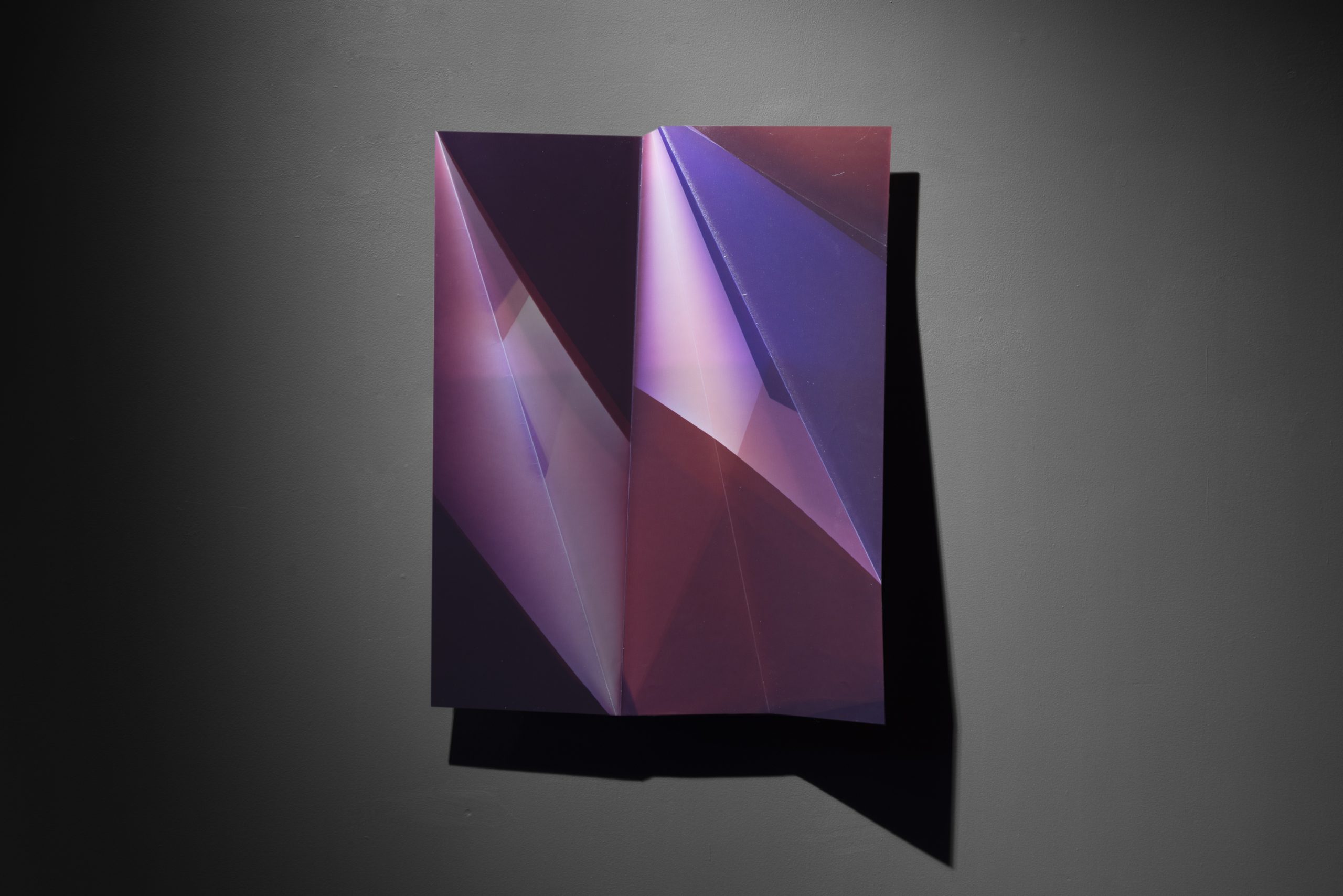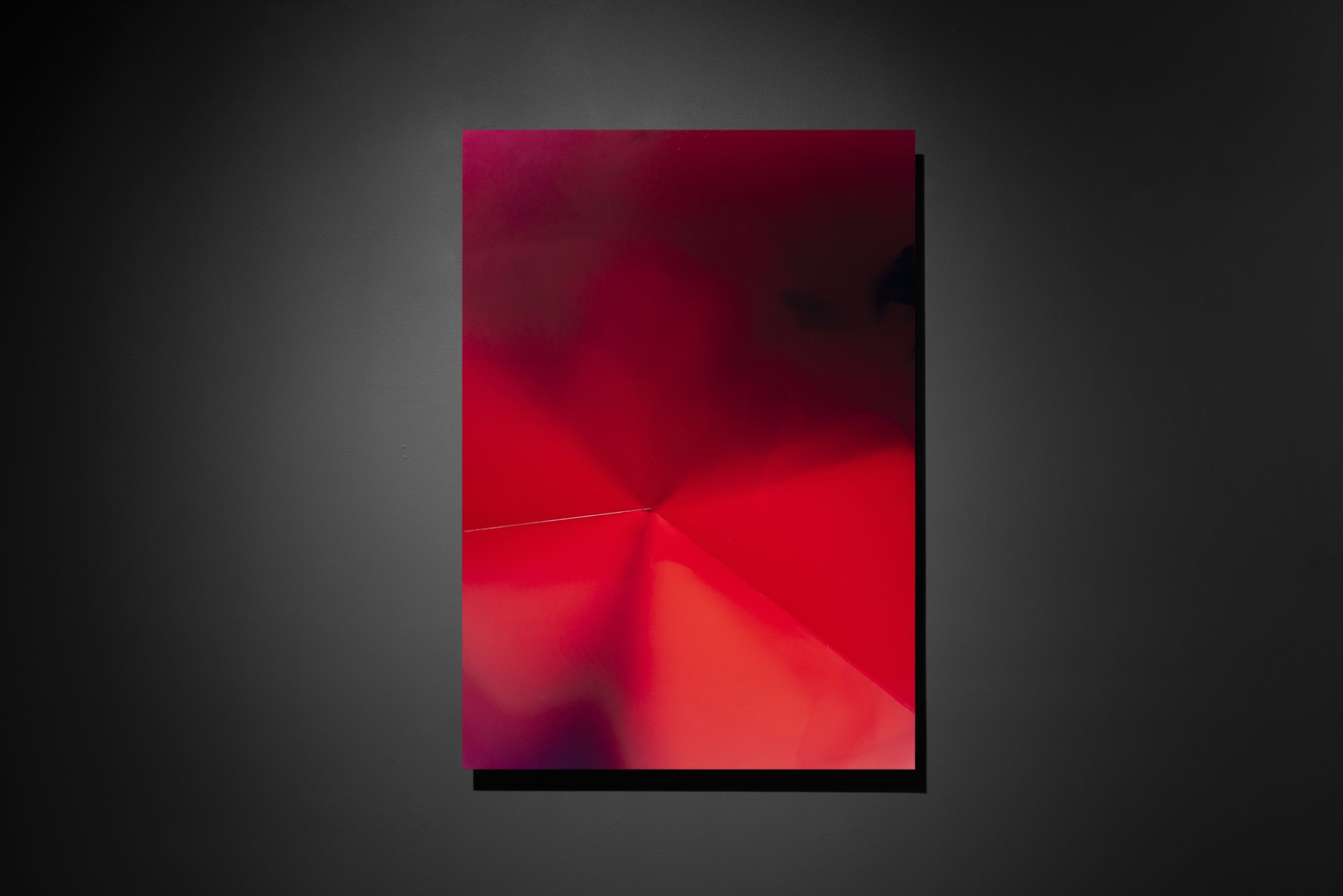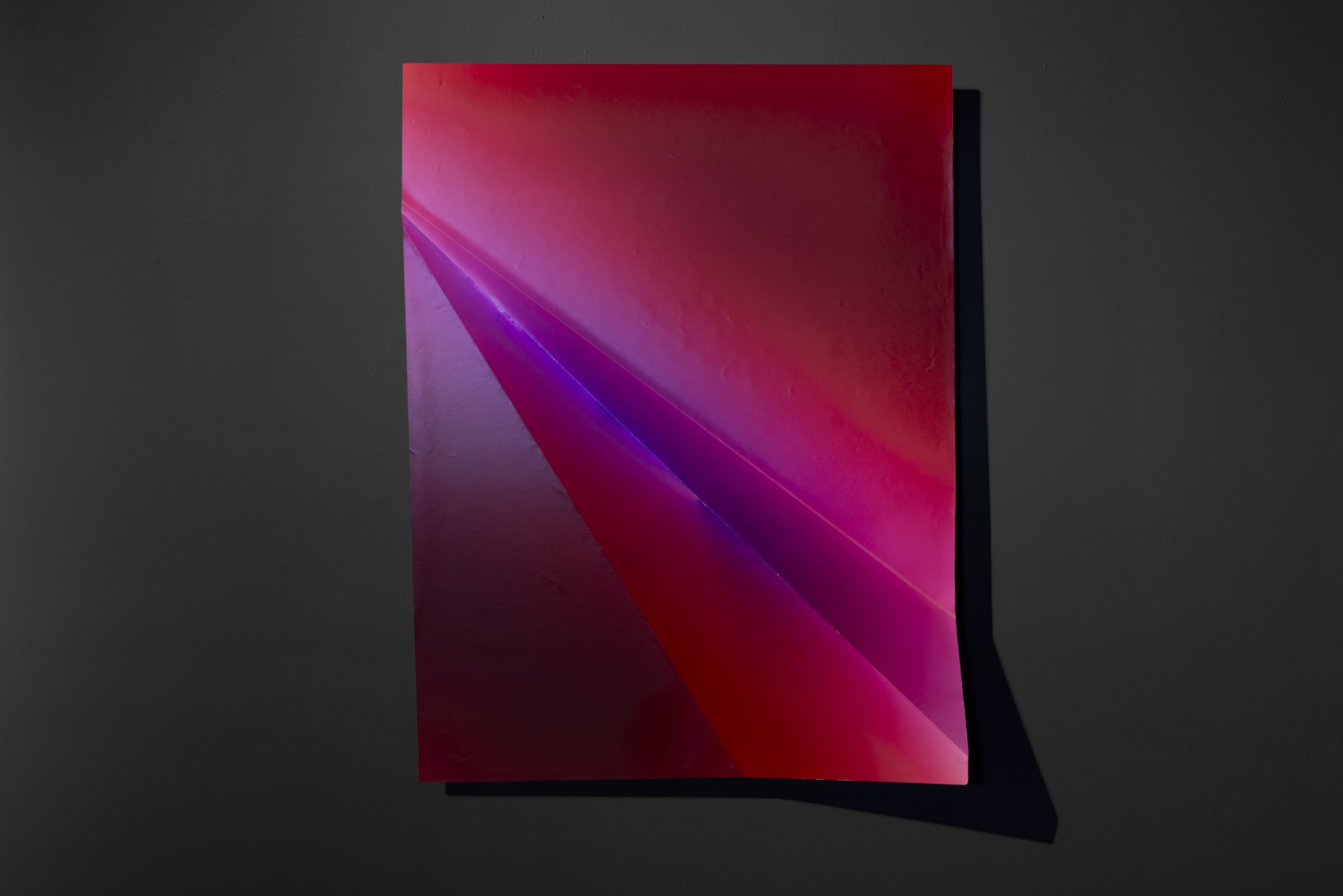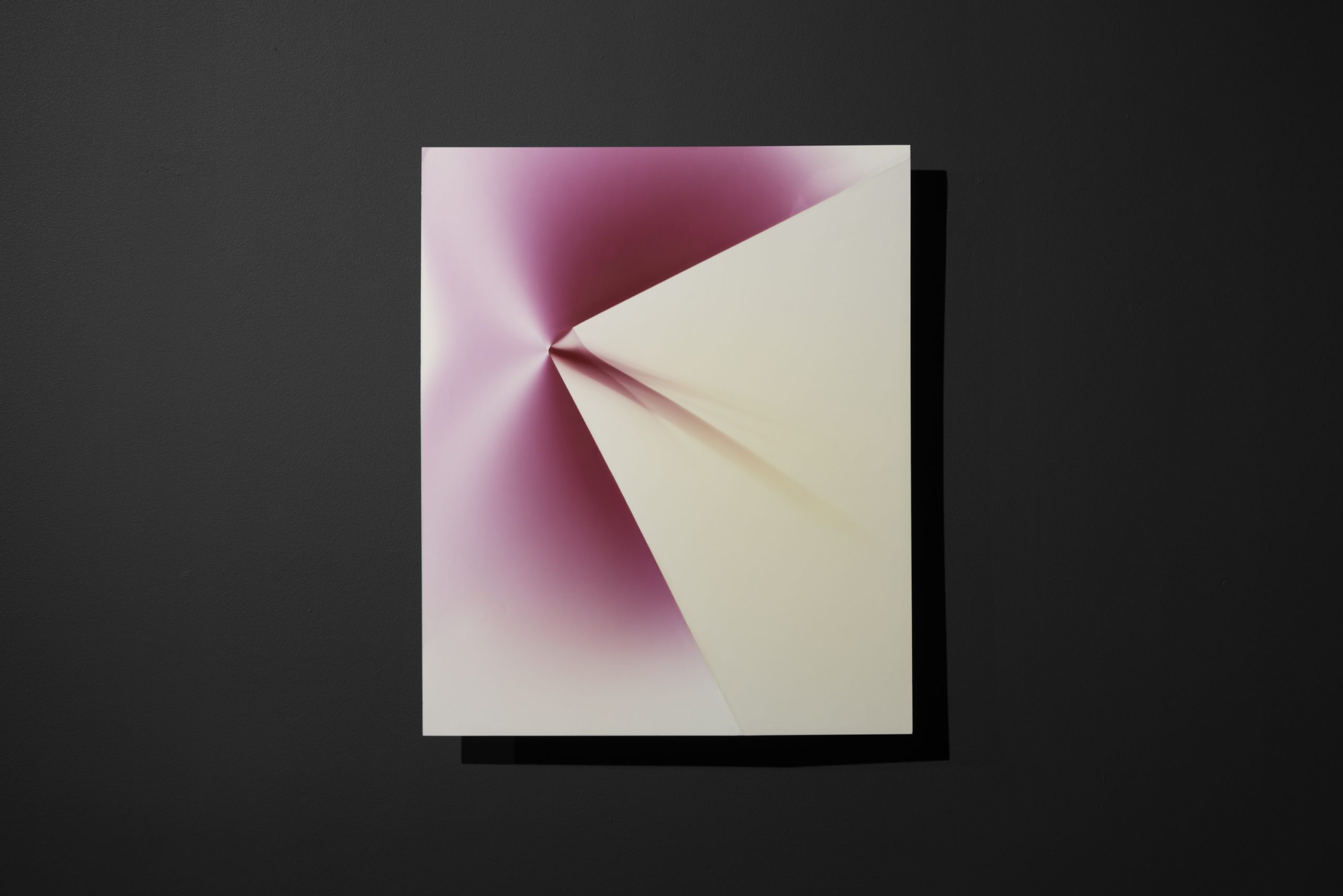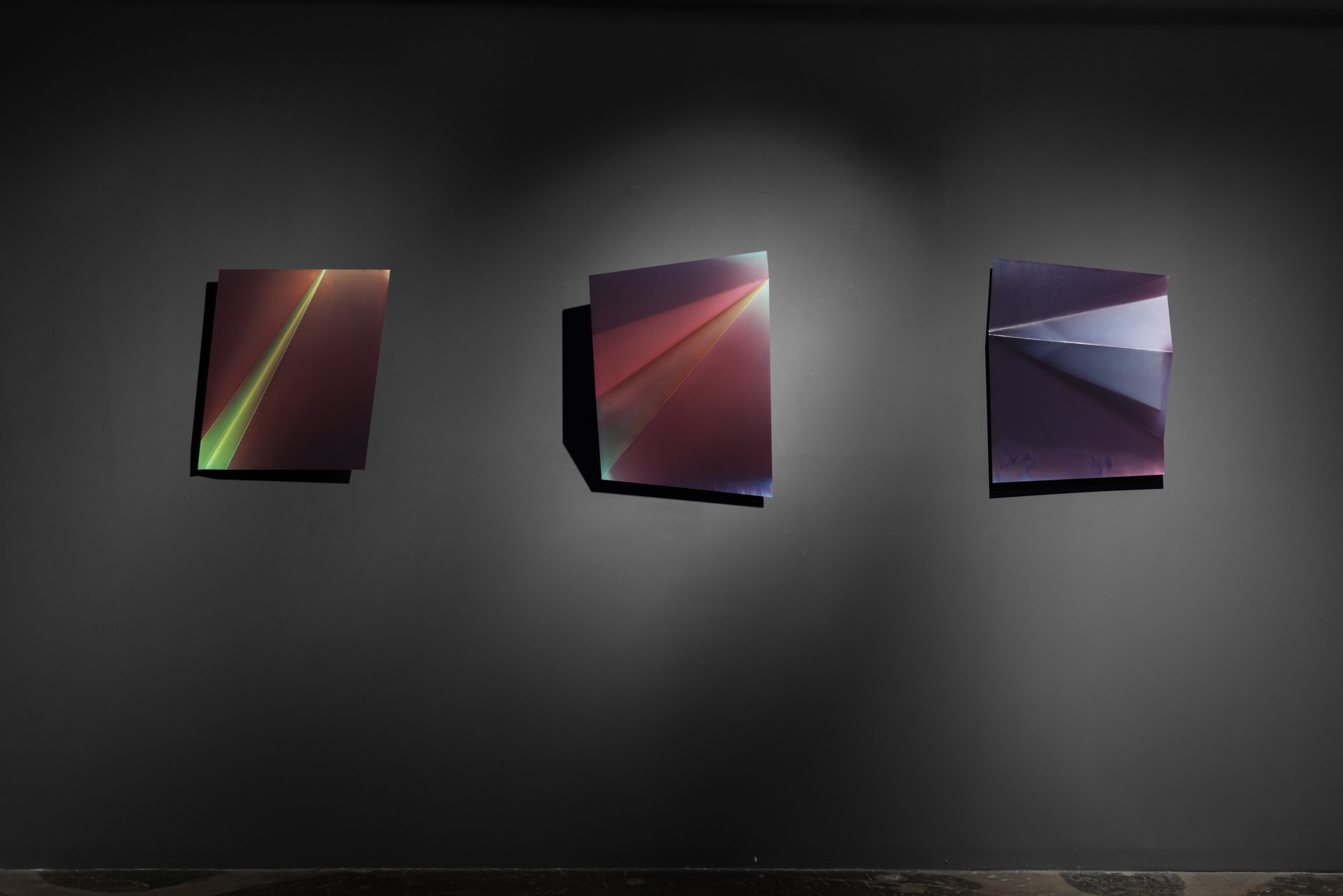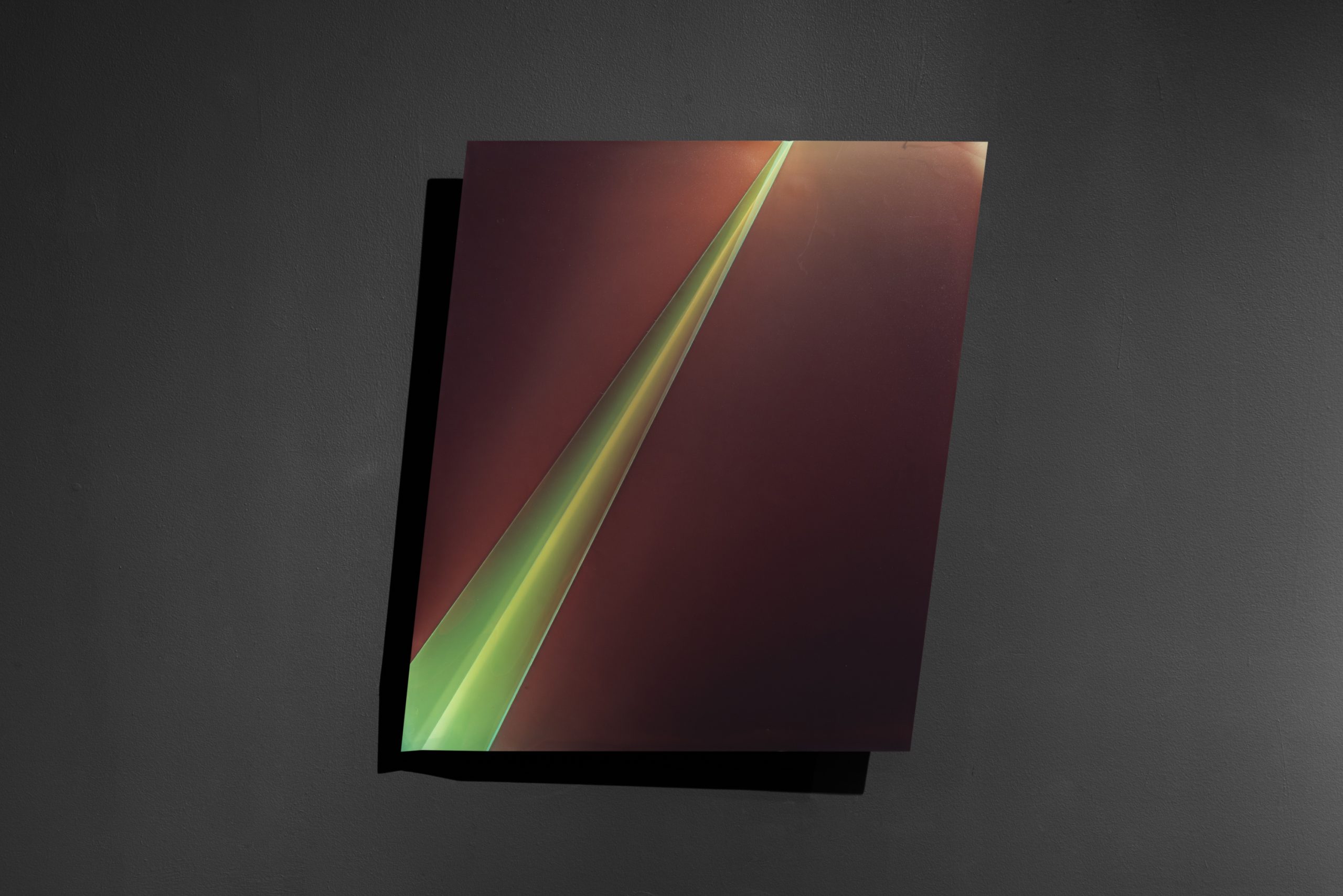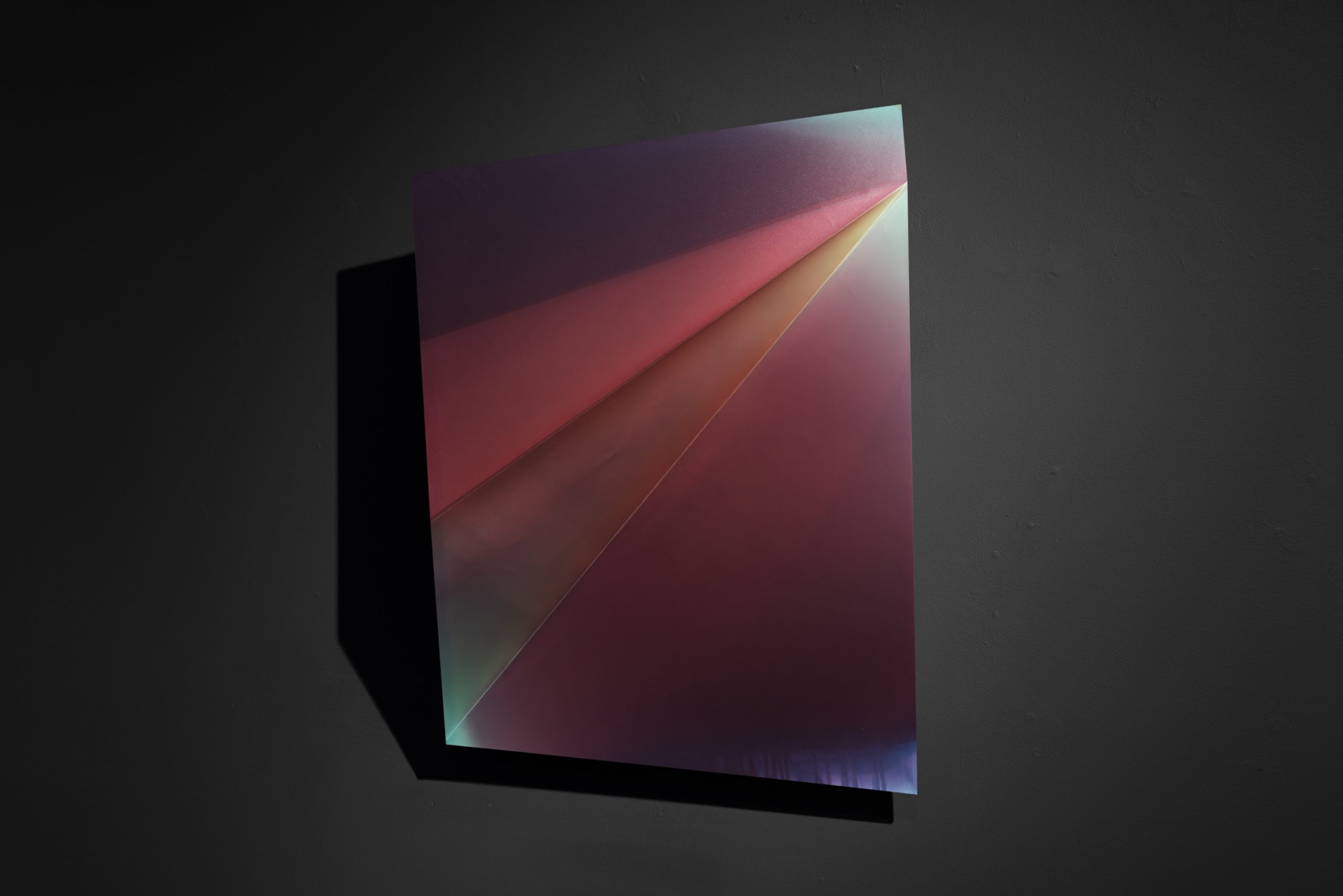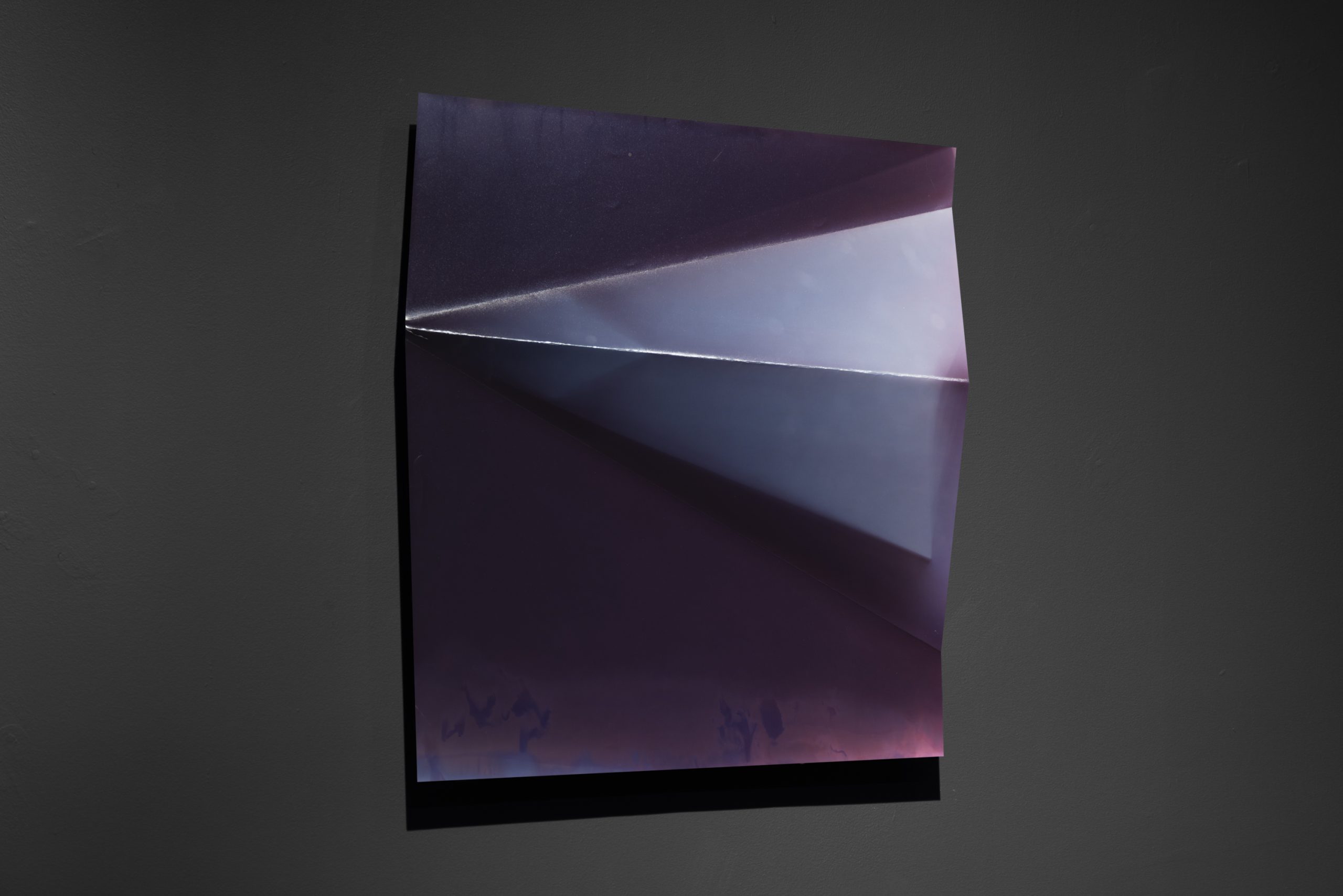Fabiola Menchelli’s exhibition we are not what we have seen presents–for the first time in Mexico–a series of works that expand our understanding of the corporeality of the photographic through a feminist gaze. The photograms transcend the two-dimensionality of the medium by absorbing the sculptural. This unfolding action in the works generates a space that favors the production of new and parallel historical, processual and formal narratives.
How to enunciate oneself from a dark or negative space? Throughout history, women’s artistic production has involved a form of decentralized dwelling and doing, in a constant state of omission or struggle. And, both their production and its significance, come into being under the gaze of the patriarchal legacy. In this sense, Fabiola Menchelli works from within a negative space and through a subaltern type of photography, but one that does not lose, in fact, it gains. Her pieces can be considered “minor works”, in the radical meaning of the term. That is to say, her works intervene into the conventional language of photography to propose a contingent one, produced through blindness and error, that also speak through a subjective voice whose echo is political.
The photograms were produced without the participation of the eye, by means of memory and touch in a darkroom. The artist folds the photographic paper and exposes it to light for different amounts of time and with color filters. This process becomes more complex as the scale of the photographic paper being used grows. Given that the dimension of the works responds to the limits of the body, its choreography in the dark, and difficulties of working with chemicals, the process involved is full of struggles, errors and visible traces. The pieces place the experience before the gaze and transgress the conventions of the practice by setting aside the perfection and purity of the final photographic image.
The pieces take their place as a body in space through the folds they entail. Bypassing two-dimensionality by presenting themselves as wall-sculptures that are composed of their internal content and the shadows they cast upon the external space. In Western logic, sculpture tends to be an illusory reminder of that which is presented as eternal. Menchelli’s sculptural photographs paradoxically combine the delicate photosensitive paper and the process of fixing the image, with the rigid metal structure. Their bodies reflect shadows that enunciate a presence that overflows from the works in a kind of theater of shadows. We could say that this “other” is the layers that are found within a single body-photo-sculpture. Due to their experimental process, the works cannot be understood within the frame of a recognizable horizon. Rather, they lose their linear orientation and are rooted in the space as they are, that is, uncut, unedited and “unimproved” in their presentation. we are not what we have seen alludes to rethinking the construction of the image and the artwork from a subjectivity that is contradictory, yet of its own making, and thus to disrupts and expands the conventions and languages of photography.
-Laura Orozco
1. Spivak, Gayatri Chakravorty, Can the subaltern speak? Colombian Journal of Anthropology. January-December 2003.
2. Deleuze, Gilles and Guattari, Félix. Kafka, for a minor literature. Mexico City: Era, 1990.
